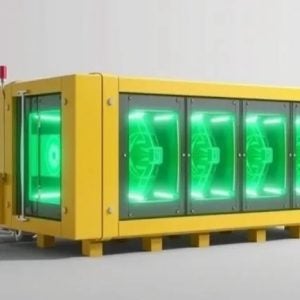The IAEA is aiming to secure the long-term supply of a medical isotope vital to the diagnosis and effective treatment of patients suffering from illnesses such as heart disease or cancer.
A recent supply crisis exposed the fragility of the current production chain for Molybdenum-99 and its derivative medical isotope, Technetium-99m. It also underscored the importance of the IAEA´s work to both strengthen the supply chain and make it more secure, by encouraging a switch away from highly-enriched uranium (HEU) to low enriched uranium (LEU) or the consideration of alternative technologies. The LEU cannot be fashioned into explosives, if diverted, unlike the highly-enriched uranium (HEU) now in use.
“It´s the right time to kill two birds with one stone. We can improve the reliability of supply and eliminate the proliferation risk presented by HEU,” said Pablo Adelfang, Head of the IAEA´s Research Reactor Section.
The recent crisis began in late 2007 and cut supply by 20 to 70 per cent, depending on location and timing. It was caused by repeated temporary shutdowns for age-related maintenance of two research reactors that produce the bulk of the world´s Molybdenum-99.
“The two major reactors are now back in operation. The crisis period is over, but that doesn´t mean that all the issues are resolved,” said Natesan Ramamoorthy, Director of the IAEA´s Division of Physical and Chemical Sciences.
All five reactors are more than 40 years old; one may close in about six years. Findings from a study by the Organisation for Economic Co-operation and Development´s Nuclear Energy Agency forecast similar age-related problems were likely to re-emerge in the next two to five years. Furthermore, it found that the economics of Molybdenum-99 production were deeply flawed: it is typically produced at a loss to the research reactor organizations.
The stakes are high. Technetium-99m is used nearly every second in some 30 million medical imaging procedures a year, making it the most extensively used diagnostic medical isotope. Its use is seen growing three to five percent annually, especially in countries looking to expand their health care infrastructure. It affords doctors high-quality images, mapping, for example, blood flow to the heart, or the spread of cancer to bones, while delivering only low radiation doses to patients. Given its rapid rate of radioactive decay, Molybdenum-99 must be produced every week to satisfy worldwide demand.
The IAEA anticipated the recent crisis and set out to promote the exchange of best practices, build effective regional, multilateral partnerships and foster creative solutions.
“In 2006, we added a new project on research reactor operation and maintenance, so that by 2008, as the crisis started to emerge, we had already published guidance on research reactor availability and reliability and had trained people to handle the modernisation and ageing challenges,” said Ed Bradley, an IAEA nuclear engineer with the Research Reactor Section. A database was developed and now holds over 300 examples of research reactor ageing management.
In 2005 it started a coordinated research project (CRP) designed to develop techniques for small-scale indigenous production of Molybdenum-99 using LEU, or another non-HEU technology. More than half the 15 State project members have since moved these technologies beyond the laboratory stage.
With IAEA advisory support, Egypt is completing a production facility that is scheduled to enter operation in 2011. Chile, Libya, Poland and Romania are all exploring domestic supply projects. Kazakhstan completed work to produce Molybdenum-99 using an alternative, non-fission-based process and is in the final stage of approvals before using the product domestically. Brazil and Malaysia both recently joined the CRP and are undertaking their own feasibility studies.
The price of Molybdenum-99 rose considerably during the crisis, causing some consternation among buyers.
“People want the same price – an unsustainably low price. There needs to be a correction in the mind-set, a paradigm shift to enable buyers to accept a reasonable, higher price,” Mr. Ramamoorthy said. Each step of the production chain must make commercial sense in order to produce the right incentives. According to the Organisation for Economic Co-operation and Development, should a reactor operator increase prices significantly to cover the real costs of isotope production, the per-patient dose costs would rise only minimally.
The CRP will end in 2011. “Looking ahead, hopefully the CRP will transition into an IAEA inter-regional technical cooperation project, in which proven Molybdenum-99 production technology is deployed by Member States,” Mr. Bradley said. If approved, this technical cooperation project would move technologies from the laboratory trials to small- to medium-scale production that builds a domestic Molybdenum-99 supply source, using commercially available technologies and equipment.
Despite the progress, uncertainties remain. “New reactors are only a long-term solution; a medium-term solution is feasible (however), by using both existing production and diversifying the sources of supply,” Mr. Ramamoorthy said.
-Sharman Esarey, IAEA Public Information, http://www.iaea.org/newscenter/news/2011/prodgap.html
Related ArticlesWhy Brazil needs nuclear power Nuclear power in Brazil Brazil set to approve Angra 3 – but decision delayed Angra hit by Brazilian blackout






